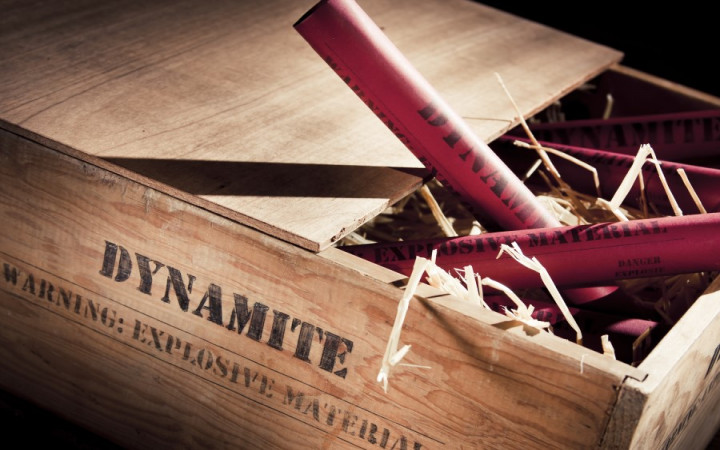Today’s Wonder of the Day was inspired by John. John Wonders, “When did dynamite get discovered” Thanks for WONDERing with us, John!
Boom! Did you hear that explosion? It sounded like a thousand sticks of dynamite blowing up at once. Can you imagine what that might look and sound like?
If you're a fan of cartoons, you may have seen Wile E. Coyote and Roadrunner playing with dynamite from time to time. Isn't it amazing how they never seem to get hurt? Of course, unlike in cartoons, real dynamite is a powerful explosive that can be very damaging.
Dynamite was invented in 1867 by Alfred Nobel. If you're wondering, yes, it's the same Alfred Nobel who started and funded the Nobel Prizes for scientific and cultural achievements. His invention of dynamite made him very wealthy, which allowed him to fund what have become some of the most prestigious awards in the world.
Before dynamite, the strongest explosive was gunpowder. Unfortunately, it wasn't strong enough for many needs and it also was dangerous to handle. Dynamite solved these problems by being both much stronger and much safer to handle.
Dynamite was used then — and still is today — in the construction, mining, and demolition industries. It also was used initially as a military weapon, although other weapons soon made dynamite obsolete.
Nobel didn't really invent a new explosive when he developed dynamite. The explosive in dynamite — nitroglycerin — already existed. The problem with nitroglycerin, though, is that it's very unstable and very dangerous to handle.
Nobel's invention made the nitroglycerin safer to handle. He did this by soaking it into a soft, chalky stone called diatomaceous earth. Today, diatomaceous earth is also often used to make cat litter.
When soaked in diatomaceous earth, the nitroglycerin was much harder to set off and thus safer to handle. Later on, other substances, such as sawdust and cellulose, were often substituted for diatomaceous earth.
Dynamite is formed into explosive sticks that feature a wick and a blasting cap. The wick is lit, which leads to a small explosion when it reaches the blasting cap. When the blasting cap explodes, the nitroglycerin then causes a much larger explosion.
Some people believe the burning wick actually sets off the nitroglycerin. In reality, a stick of dynamite can be burned without exploding. It's the small explosion of the blasting cap that is required to cause the nitroglycerin to explode.
You may see some explosives labeled “TNT" that look like dynamite. TNT stands for trinitrotoluene, which is also an explosive but quite different from dynamite. Dynamite is actually much more powerful than TNT.
Standards: CCRA.L.3, CCRA.L.6, CCRA.R.1, CCRA.R.2, CCRA.R.4, CCRA.R.10, CCRA.SL.1




